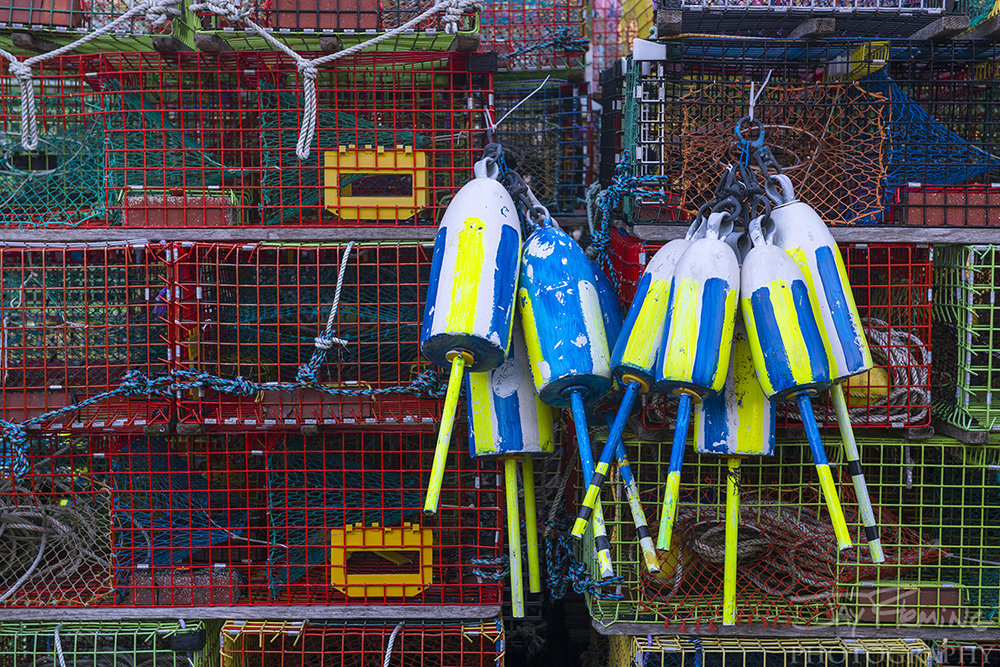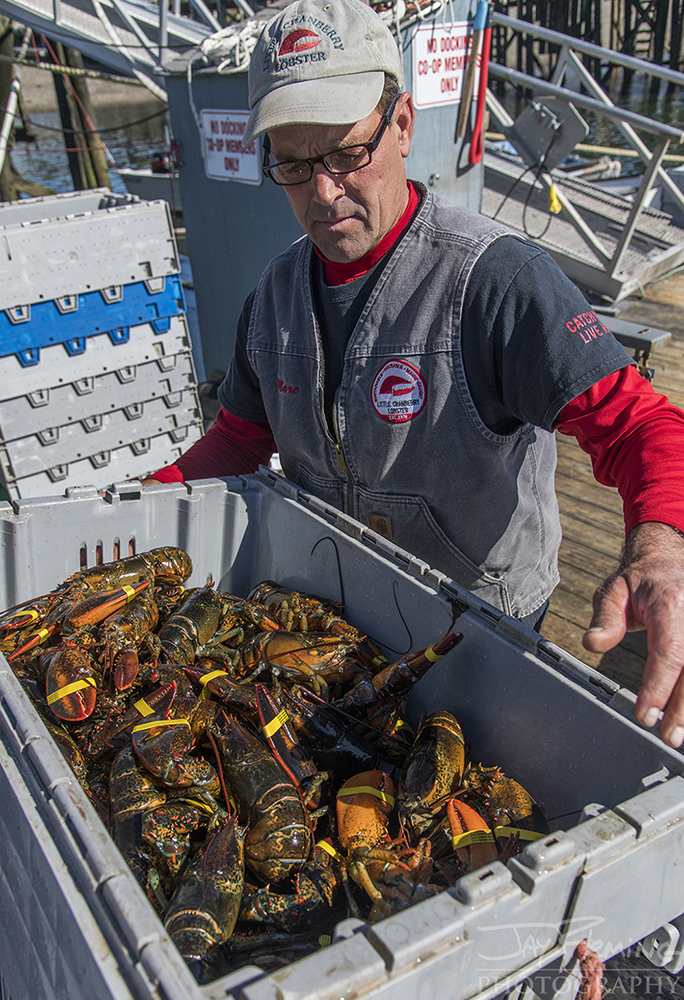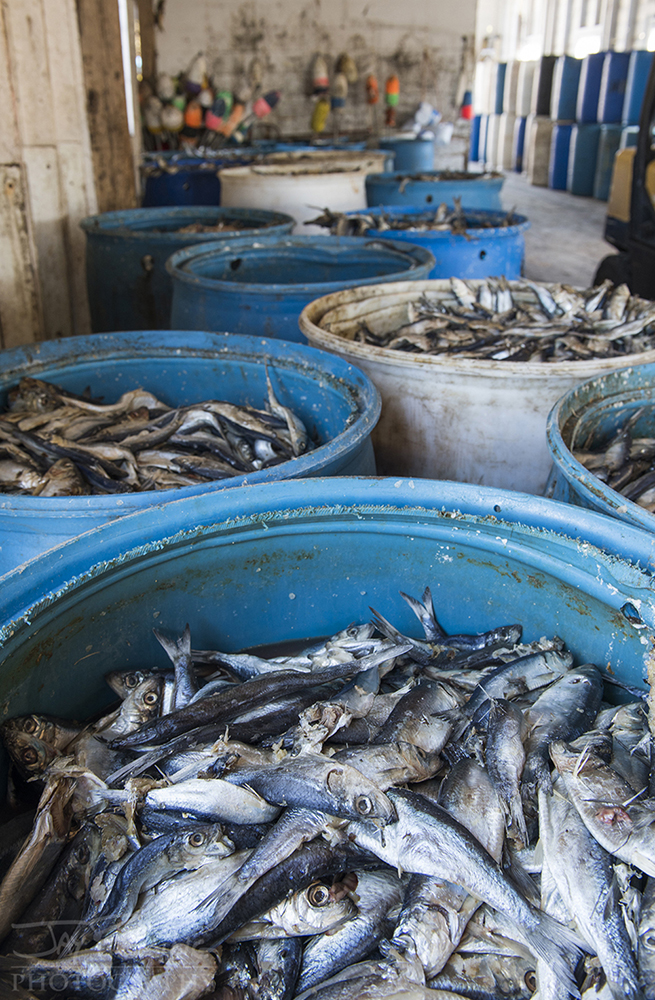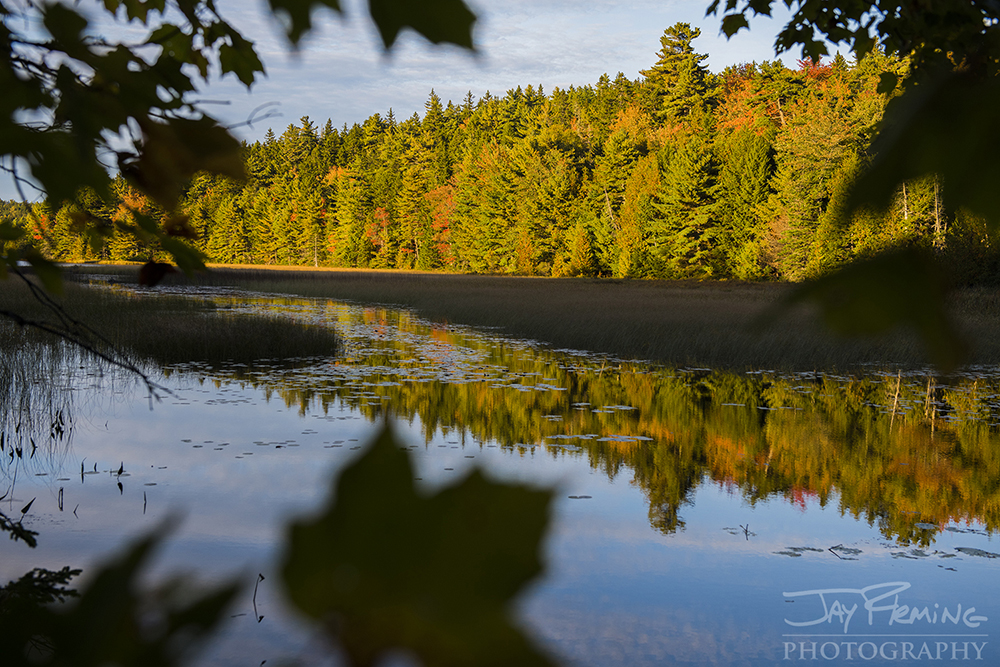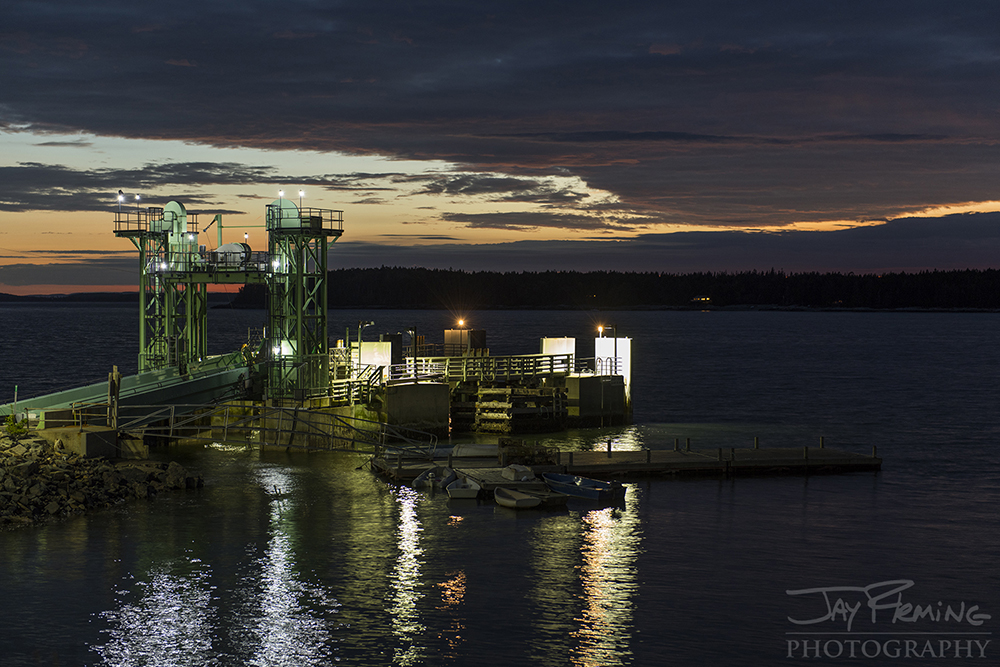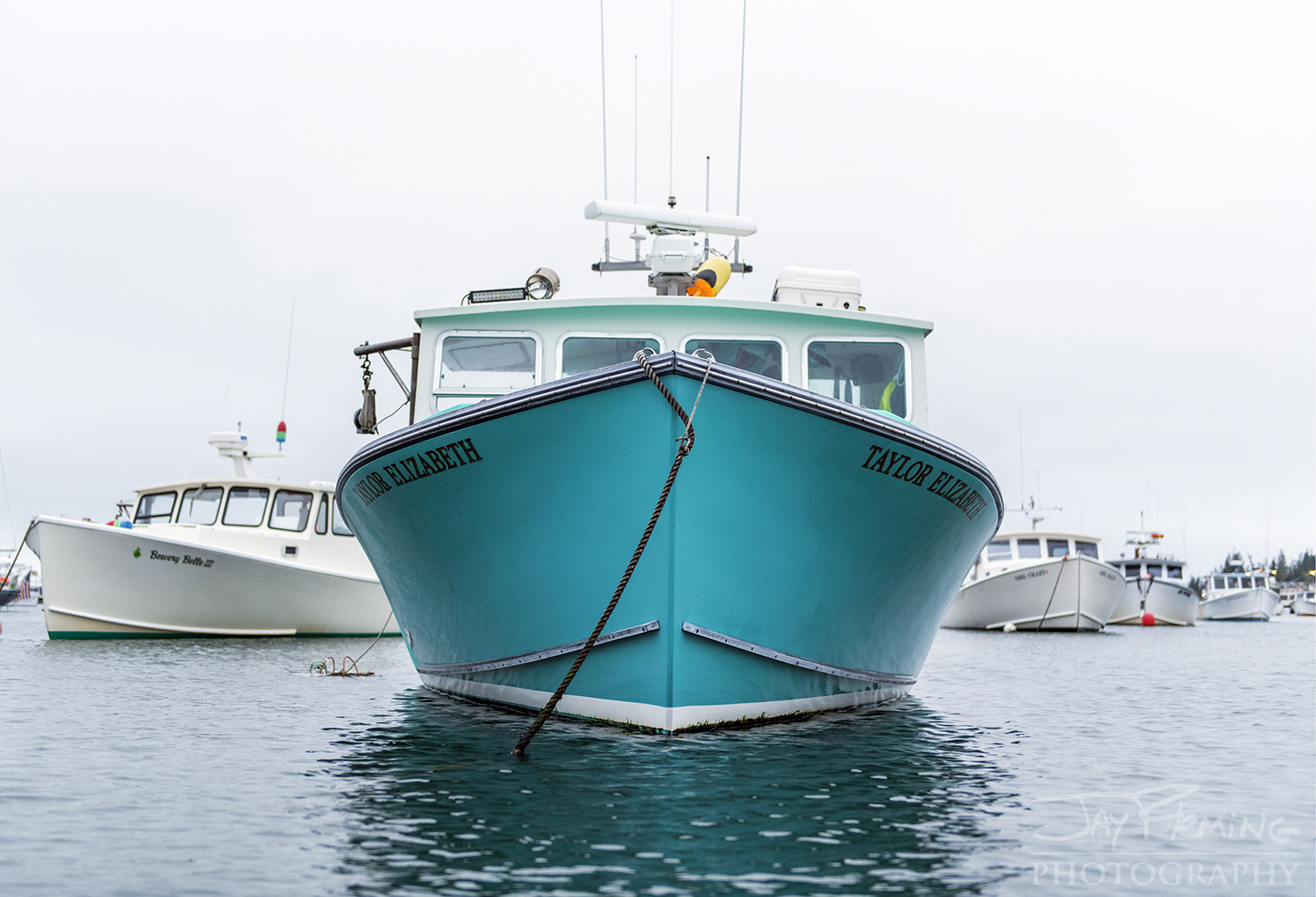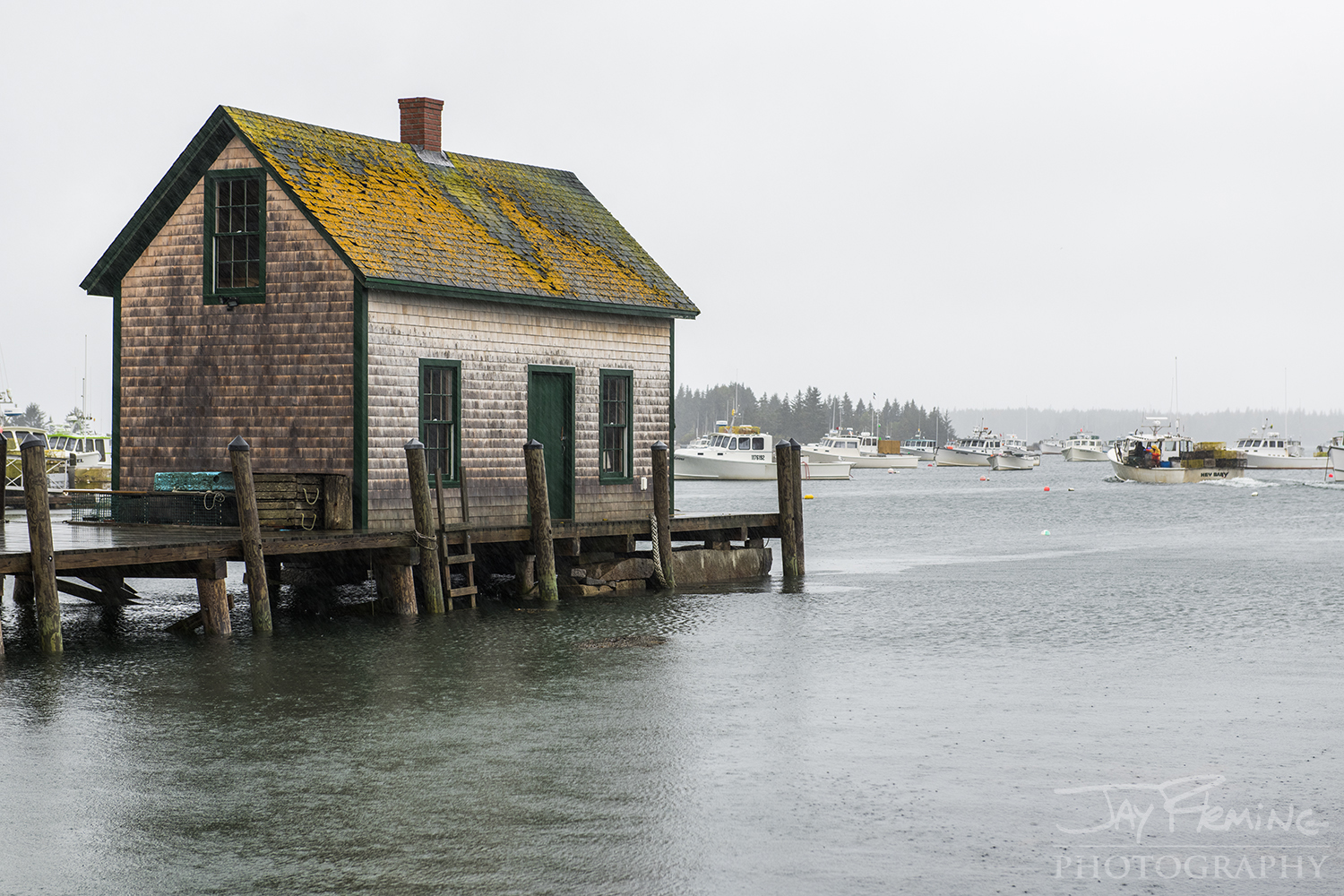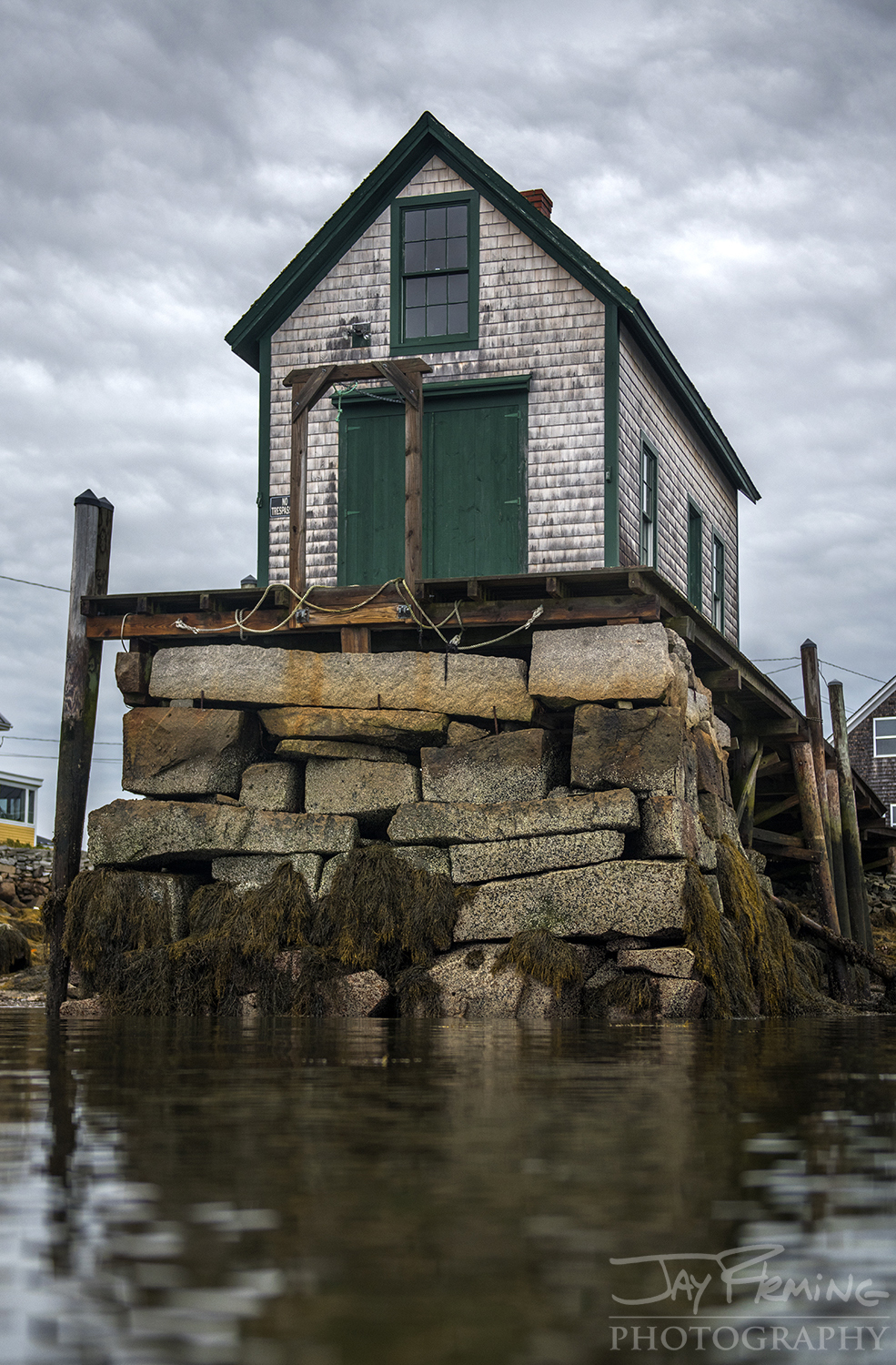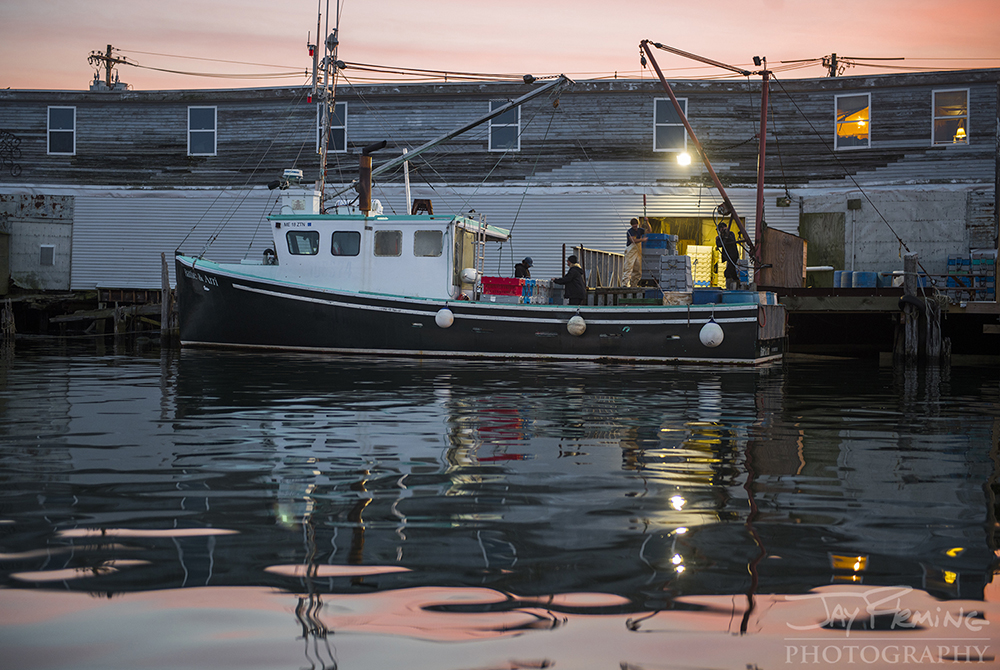In early October of this year, I carved 10 days out of my schedule to visit the coast of Maine. With help from the staff at the Island Institute, I made an itinerary that involved visiting three of Maine’s offshore island lobstering communities - Matinicus, Islesford and Vinalhaven. The Island Institute works to sustain Maine's island and remote coastal communities, and exchanges ideas and experiences to further the sustainability of the island communities. I had connected with the Island Institute through my involvement with the organization Smith Island United - a group dedicated to preserving the culture, environment and history on Maryland’s only inhabited offshore island in the Chesapeake Bay. The Island Institute was able to connect me with fisherman to photograph out of Islesford and Matinicus, and through a friend on Tangier Island, I was able to connect with a fisherman on Vinalhaven to go lobstering with.
Matinicus Island
Lobster gear on a wharf at Matinicus Island.
Lobstermen use the extreme tidal range to their advantage when working on and cleaning the bottom of their workboats. Wet Bugs at the Matinicus Island Harbor.
Workboats tie up abreast to the ‘lobster cart’ in the harbor at Matinicus to sell their catch. The lobster buyer will run the lobsters into Rockland, Maine after each day of buying.
Aerial view of a workboat moored in the harbor at Matinicus Island.
Lobsterman, Clayton Philbrook, rowing his skiff back to the wharf after a day of lobstering out of Matinicus Island.
Eli Philbrook, grandson of lobsterman Clayton Philbrook, plays in his grandfathers freshly painted buoys.
Colorful lobster gear on the wharf at Matinicus Island.
Rocky shoreline on Matinicus Island.
Islesford - Cranberry Islands
Cranberry Isles Fisherman’s Co-Op fisherman, Andy Moody.
Cranberry Isles Fisherman’s Co-Op fisherman, David Thomas and his crew hauling traps at first light.
Block and tackle used to haul up lobster pots.
Banding prevents the lobster from being able to use their claws after being caught.
Cranberry Isles Fisherman’s Co-Op bands.
Female lobsters carry eggs on the underside of their tail (left). When caught in a trap, these lobsters are released and notched. Notching the lobsters tail identifies that particular lobster as a reproducing female even after she lays her eggs. All notched lobsters are required to be released to help ensure the sustainability of the lobster fishery.
Detail of the egg bearing female lobster pictured above.
The tail of a lobster.
Lobsters are kept alive in holding tanks with recirculating water on the workboats after being pulled out of the traps.
Lobster being unloaded from a workboat’s holding tank into the Cranberry Isles Fisherman’s Co-Op holding containers.
The holding containers can house up to 90 pounds of live lobsters. These are stored in the water to keep the lobsters alive.
Loading the holding containers full of lobster into the Cranberry Isles Fisherman’s Co-Op boat Dividend.
The bait shed at the Cranberry Isles Fisherman’s Co-Op.
Barrels of Salted Herring ready to be used as bait.
Salt preserves bait like these Menhaden and allows for non-refrigerated storage.
Mount Desert Island
Fall colors in and around Acadia National Park.
Wild mushrooms in Acadia National Park.
Looking east from the summit of Cadillac Mountain, Maine’s highest peak.
Lichens on a rock at the summit of Cadillac Mountain.
The ferry terminal at Bass Head on Mount Desert Isle.
Looking east on Southwest Harbor at dawn.
Owls Head
Owls Head light at dawn.
Boats moored in the harbor at Owls Head, Maine.
Vinalhaven
Workboats at dawn on Carvers Harbor.
Jacob Watt working near Saddleback Light in Isle Au Haut Bay.
MaKenzie Hannah working near Saddleback Light.
Hauling traps off Vinalhaven Island.
Measuring a lobster.
Banding tools and bands.
Rockfish (left) and Herring.
Bait bags packed with Herring.
Northern Shrimp caught in a lobster trap.
Jonah Crabs are by-catch of the Lobster fishery.
Vinalhaven lobsterman, Taza Watt.
First Light working lobster pots off Vinalhaven.
Workboats unloading lobster at Linda Bean’s lobster dock on Carver’s Harbor.
Workboats moored in Carver’s Harbor on Vinalhaven Island.
Skiffs tied up to a floating dock on Carver’s Harbor. Skiffs are used to get out to workboats moored out in the harbor.
A floating dock holding lobster gear in Carver’s Harbor.
Carver’s Harbor on Vinalhaven Island.
Working sheds lining the waterfront of Carver’s Harbor on Vinalhaven Island.
An abandoned workboat on Vinalhaven Island.
Detail of the workboat pictured above.
Portland
Harbor Fish Market, an icon of Portland’s working waterfront.
A workboat unloading lobsters at a seafood wholesaler on one of Portland’s commercial piers on the Fore River.







